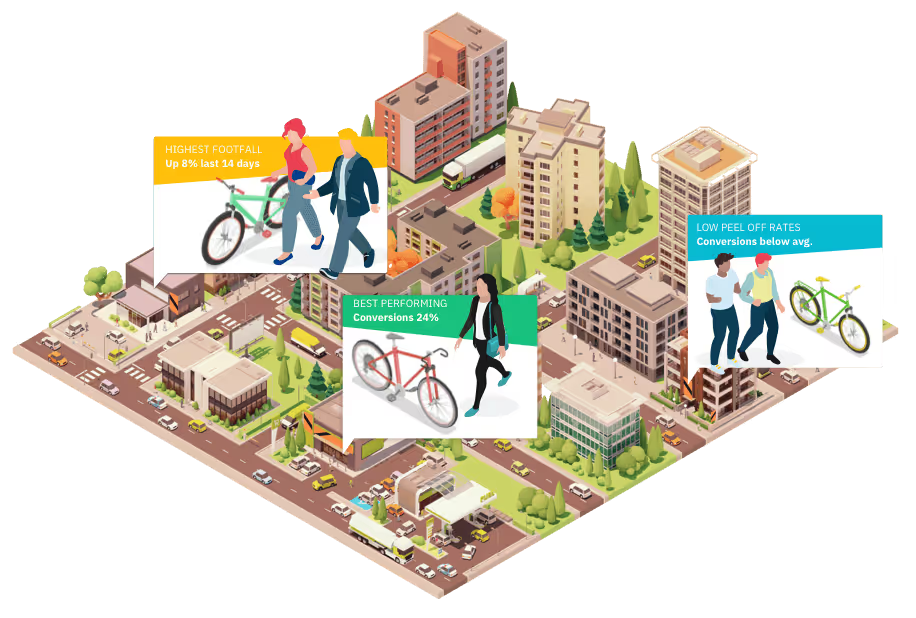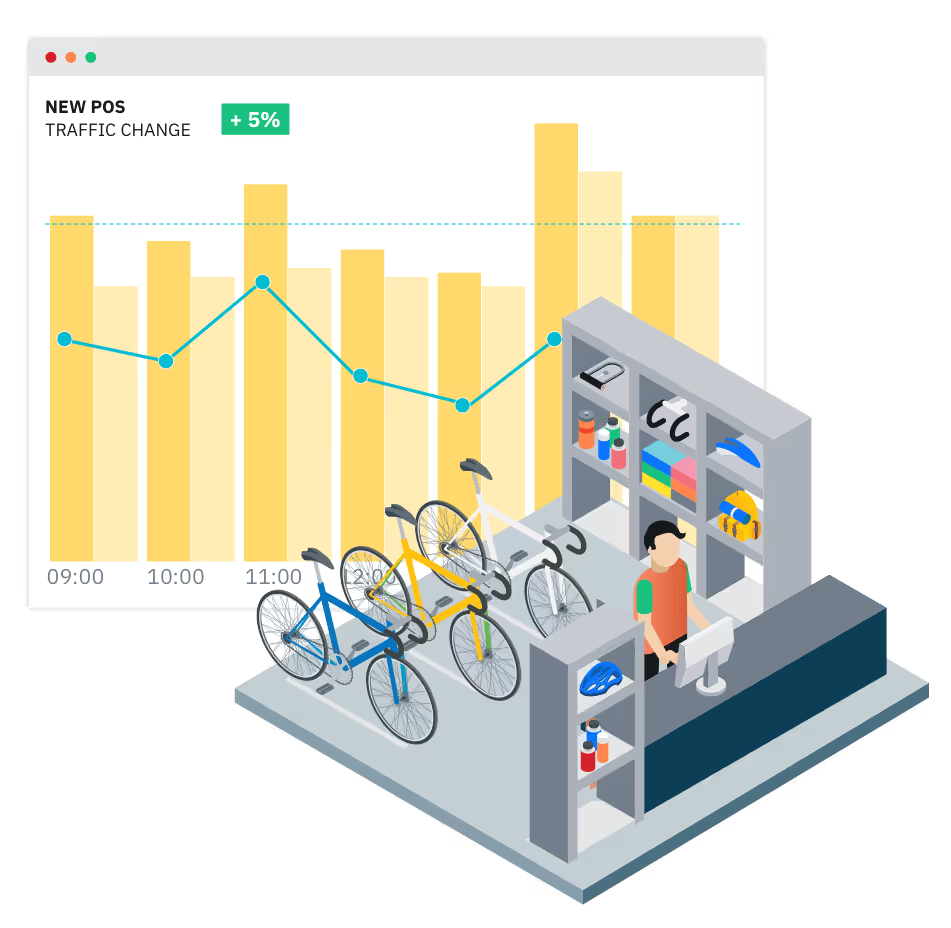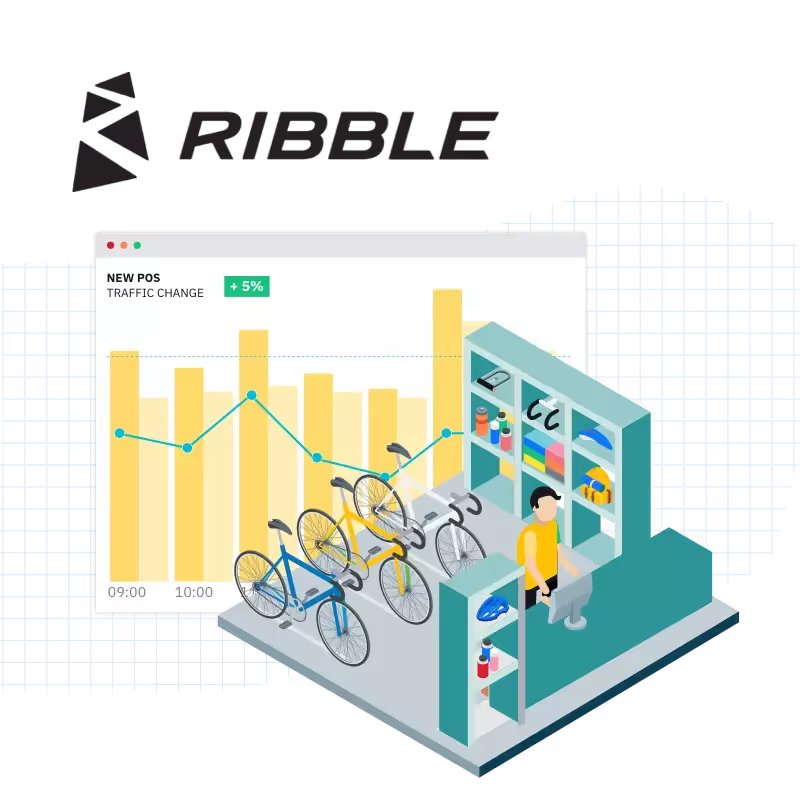HoxtonAi is an integral part of our omnichannel strategy, and I’m excited to keep building on the ways we utilise the data in the future.
Background
Ribble is one of the oldest, most iconic bicycle brands in the world, experiencing their most successful growth phase since their founding 120 years ago.
Ashley, Head of Retail for Ribble Cycles manages the omnichannel expansion of the Ribble brand. They want their customers to experience the product in person, to assess and try their cycles and understand the history and pedigree of the business. As such, hand-in-hand with their ecommerce channel, they are growing their store estate as a key component of their business strategy.
With many moving parts, managing and growing a store estate in an omnichannel business can present challenges. Business reviews and assessments are inevitably anchored on the most important KPI: sales.
However, it can be difficult to analyse and conclude much from store sales alone, because there are many factors that could impact it, for example:
- Marketing spend
- Placement of store (i.e. location opportunity)
- Variations in local weather
- Variations in local economy
- Performance of sales staff
- Window display efficacy
The cause-and-effect of each of the above can easily be lost. This is exacerbated in omnichannel retailers, where the store estate has impacts beyond simply sales. Click-and-collect, brand store experience and high street visibility are all essential to the strategy too.

The Data Gap
Ashley wanted to drive better conversations with management and landlords, to gather evidence for store location decisions, to decouple the impact of marketing on sales and most importantly to identify and spread best practice across the estate.
To do this, Ashley identified the data gap: metrics further up their sales funnel - i.e. before the purchase has happened - to better isolate and measure the drivers behind the sales AND the success of rolling out the Ribble store experience to their customers.
Specifications
First of all, Ashley wanted to understand passing traffic - the ‘baseline’. This drives conversations related to store location, the impact of weather and local factors, such as the success of the shopping centre or high street location.
Secondly, counting store visitors - in and out - allows Ribble to benchmark how many customers use each store in isolation.
Transactions and point of sale data. This allows Ashley to understand the number and value of purchases in each store.

Combining the data.
The power of having three metrics rather than sales in isolation is transformative. Ashley is able to isolate and assess the impact of distinct drivers of sales. For example:
- Comparing passing traffic across stores with the rent they are paying. This enables Ribble to assess value for money for the location they are investing in.
- The ‘capture rate’: the percentage of people that walk past that enter the store. Changes in this metric indicates the effectiveness of window displays, local marketing and sales events.
- The ‘conversion rate’. Comparing the number of people entering the store with the transactions within the store. Comparing over time and locations could identify where sales best practice is driving revenue growth. This best practice can be shared across stores, and the impact measured through the conversion rate.
Much like you can A/B test changes on a website, Ashley can now change store operations and measure the impact, but with a far richer set of metrics than before.
We now have visibility over how potential customers interact with our stores and what influence we can have to generate footfall to specific locations with targeted campaigns, giving us vital insight into the people who haven’t made a purchase yet.

Why HoxtonAi?
To make decisions using data like this, you need to have complete faith in its accuracy. If it isn’t representative, it doesn’t mean anything.
Ashley wanted a technology provider that fits Ribble’s thesis of scalability, customer experience and data-driven decision making.
Of the three metrics needed, Ribble already had transaction data, but were missing passing traffic and entrance data. They were able to occasionally get shopping mall footfall reports from some landlords, but it was aggregated across the asset, and not specific to their own store. Furthermore, some members of the team had experience with people counting devices in the past, which were often inconsistent, hard to interpret and difficult to access the granularity of data needed for this exercise.
To bridge the data gap, Ribble needed a device and data platform that could accurately count people walking past the stores and people in and out of the stores.
Most importantly, however, it was essential that - just like Ribble itself - Ashley could try the product first, to come to a decision on whether it works for their own business. Allocating budget to cutting edge technology can be risky, and given the importance of this data for business growth, there was no room for error, and no budget for a technology that didn’t drive real value.
Deploying HoxtonAi: Simplicity itself
Setting up the cameras couldn’t have been easier. I thought remotely installing a camera-network across multiple sites would be a logistical nightmare, but they really are plug-and-play and reporting is very simple for all relevant heads to access.
The first step of the partnership with HoxtonAi was a two store trial. Ashley worked with HoxtonAi to issue devices to two stores in very different environments.
The stores were already equipped with internet and power, and the store staff themselves mounted the devices in a matter of minutes to start collecting the data: all configurable and accessible through their smartphones and the HoxtonAi cloud platform.
Within a matter of hours, Ashley could log in to the HoxtonAi Control Room, to monitor the device health, positioning, configuration and of course access the key datapoints he needed. With the User Management control, he could also choose which parts of the Control Room and data to share with his team - for example full access to data could be shared with his peers, and per-store data with his local teams.
Furthermore, using the data Excel exports or the comprehensive API platform, Ashley was able to extract the datapoints needed, to compare them with their store transaction data. With this, Ashley was able to generate a ‘full funnel’ store report.
Impact
The trial took minutes to set up and configure. The impact of the data was immediate and ongoing.
The full-funnel reporting is regularly shared with senior management, informing high quality conversations on each variable that can drive sales in the store. A week of low sales is now correctly attributed to a quiet week in the shopping centre due to weather, and the impact of sales training initiatives (through conversion rates) is isolated from monthly retail trends.
Being able to quantify a baseline of store-potential builds a firm foundation to make operational decisions and apply a ‘measure it to move it’ approach
As a direct result of data and analysis, one of the store locations was moved to a busier area with the same landlord, marketing plans were changed to focus on those with highest impact, and the stores with the best sales practice were rewarded.
As the data collects, its value increases, exposing seasonal trends to inform long-term marketing initiatives and even business omnichannel strategy itself.
Summary
Omnichannel retail is complex, and there are many variables driving store outcomes. The Ribble partnership with HoxtonAi has enabled them to isolate and explain what’s driving performance, and ensure that their retail estate is measured with the same rigour and visibility as their e-commerce arm.
This allows us to quickly identify the areas that require investment - either through marketing, activation events or renovation which we can apply across our other sites where we see success.

The future
As a fast moving technology business, HoxtonAi regularly releases new capabilities that Ribble is able to trial, assess and quickly roll out if the RoI is clear for them. Future capabilities include integrations into POS, staffing and marketing systems, ensuring that whilst it’s easy to get started with HoxtonAi, it is a long-term investment in technology strategy and business optimisation.
HoxtonAi
HoxtonAi is a technology company that delivers the easiest and most impactful traffic, occupancy and conversion data to the fastest-growing retailers. We offer simple trial packages to quickly assess RoI and business impact of our solution, and support customers globally.



